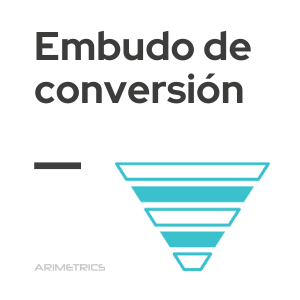Definition:
The conversion funnel is a concept used in e-commerce to describe the journey a consumer takes through an internet advertising or search system, browsing an e-commerce website, and eventually converting to a sale. The metaphor of a funnel is used to describe the decrease in numbers that occurs at each step of the process.
The role of funnels in the conversion process
In the conversion process, a large number of potential customers may search for a product or service, or arrive at a referral page related to an e-commerce site through a banner, ad or link. However, only a small proportion of these visitors will click on the link. This ratio is measured by the click-through rate (CTR), which represents the top level of the funnel. Click-through rate is very sensitive to small changes, such as link text, link size and position, among other factors, which interact cumulatively. Optimizing ads to maximize CTR is a relevant part of the conversion process.
Once the user clicks on the link and arrives on the site, only a small proportion of these visitors continue on to the product pages, further narrowing the funnel. Each additional step taken by the visitor typically reduces the number of visits by 30% to 80% per page.
As visitors add products to the shopping cart, register or complete contact information and checkout, the number of participants decreases cumulatively along the funnel. The more steps there are, the fewer the number of visitors who become paying customers. For this reason, sites with similar prices and products may have different conversion rates and, consequently, significantly different profits.
Phases of the conversion funnel
The conversion funnel is composed of several phases that guide the consumer from the first contact with a product or service to the final conversion:
- Awareness: Consumers realize they have a need or problem and begin to look for solutions.
- Interest: Consumers investigate more about possible solutions.
- Consideration: Consumers evaluate different options and compare products or services.
- Intent: Consumers are looking for more specific information, such as pricing and payment options.
- Evaluation: Consumers review the final details before making a purchase decision.
- Purchase: The consumer makes the transaction and becomes a customer.
- Loyalty: The focus shifts to customer retention and loyalty building.
Stages of the Conversion FunnelU
The terms TOFU, MOFU and BOFU describe the different stages of the conversion funnel, focusing on how prospects should be approached and nurtured at each stage of the buyer’s journey:
- TOFU (Top of the Funnel): Attract the attention of the target audience and increase brand visibility with informative and educational content.
- MOFU (Middle of the Funnel): Nurture consumer interest and position the brand offering as a viable solution.
- BOFU (Bottom of the Funnel): Convert interest into a concrete purchase action with content that facilitates the purchase decision.
Conversion funnel optimization
Optimizing the conversion funnel is of great importance to maximize the effectiveness of any e-commerce, improving both the user experience and conversion rates. Below are some key strategies:
- Simplifying the checkout process: Reducing the number of steps required to complete a purchase helps minimize cart abandonment. This can be achieved through simplified forms, quick checkout options and clear navigation. Make sure essential information, such as total cost and shipping options, is visible from the start to avoid unpleasant surprises that may deter shoppers.
- A/B testing: Implementing A/B testing allows you to compare different versions of site elements, such as call-to-action buttons, page layouts and text, to determine which is more effective in conversion. These tests help identify which changes generate the most interaction and sales, allowing for adjustments based on concrete data.
- Personalizing the user experience: Using user behavioral data and preferences to personalize the shopping experience can increase the relevance and appeal of the site. This includes personalized product recommendations, special offers based on browsing history and targeted messages. Personalization not only improves the user experience, but also increases the likelihood of conversion.
- Optimization for mobile devices: With the increasing use of mobile devices for online shopping, it is critical that the site is optimized for smartphones and tablets. This involves responsive design, fast load times and a consistent user experience across all devices.
- User behavior analysis: Using analytics tools to track how users navigate the site can reveal friction points or areas for improvement. Heat maps, session recordings and funnel analysis can provide valuable information about where users abandon the buying process.
- Improving trust and security: Assuring customers that their information is protected is vital to building trust. Displaying security certificates, clear return policies and customer testimonials can help reduce buyer anxiety and increase conversions.
Conversion funnel analysis tools
There are several tools that help analyze and optimize the conversion funnel, providing valuable data on user behavior:
- Google Analytics: Provides detailed reports on user behavior on the website.
- Hotjar: Provides heat maps and session recordings.
- Mixpanel: Focuses on event analysis and provides detailed information.
- Optimizely: An A/B testing platform for experimenting with different page versions.

